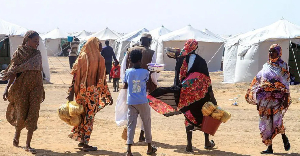Sunyani, Aug. 12, GNA – The Brong-Ahafo Region has recorded a marginal progress in the management of the HIV/AIDS as the regional prevalent rate of 2.0 percent for 2010 indicates a decrease of 0.9 percent over the 2009 rate, Mr. Eric Opoku Deputy Regional Minister, has said.
He said the regional linear graph revealed that HIV prevalence was gradually declining and added that efforts must be made to sustain the trend.
Mr. Opoku was speaking at the opening of a dissemination workshop of HIV/AIDS National Strategic Plan (NSP) 2011-2015 organised and sponsored by the Ghana AIDS Commission (GAC) for stakeholders in the Brong-Ahafo Region.
He said despite the gains made “it is very disheartening to observe that of the 10 causes of inpatient deaths recorded in the Brong-Ahafo Region, HIV/AIDS was among and has been consistent through the first-half of the years 2009, 2010 and 2011”.
“According to records from the Regional Directorate of the Ghana Health Service, 36, 75 and 25 died out of the 137, 240 and 118 people respectively admitted in our various health facilities during the first half of the years 2009, 2010 and 2011”, he said.
Mr Opoku said the NSP 2011-2015 had given him a sigh of relief because it emphasized up-scaling of HIV prevention to reduce new HIV infection by 50 percent.
He stressed the NSP 2011-2015 also aimed at virtual elimination of Mother-to-Child-Transmission (MTCT) of HIV as well as strengthening both health and community systems for sustainable and optimum treatment for People Living with HIV.
Mr. Kwabena Kyeremeh Atuahene, the Director of Research, Monitoring and Evaluation of GAC, expressed optimism that with a collaborative effort of all stakeholders the prevalence rate of the HIV menace could be reduced.
Mr. Atuahene said the HIV prevalence rate among pregnant women was 3.6 percent in 2003 but had reduced to 2.0 percent by 2010 whiles the general population’s prevalence rate also stood at 2.22 percent in 2003 but had fell to 1.5 percent in 2010.
The statistics indicated that the HIV prevalence rate for “men who have sex with men” was 25 percent in 2006 whilst that of female sex workers was also 25 percent in 2009 whereas the rate for prisoners was 5.9 percent in 2008.
Nana Kwame Korang V, Paramount Chief of Awuah-Domase near Sunyani who presided, said knowledge and information acquired at such workshops only ended with participants at the regional and municipal/district levels to the detriment of the rural population.
He suggested that organizers in collaboration with participants should involve participation at the grassroots in the villages and hamlets in the region on such information, education and communication programmes on the disease.
Health News of Friday, 12 August 2011
Source: GNA












